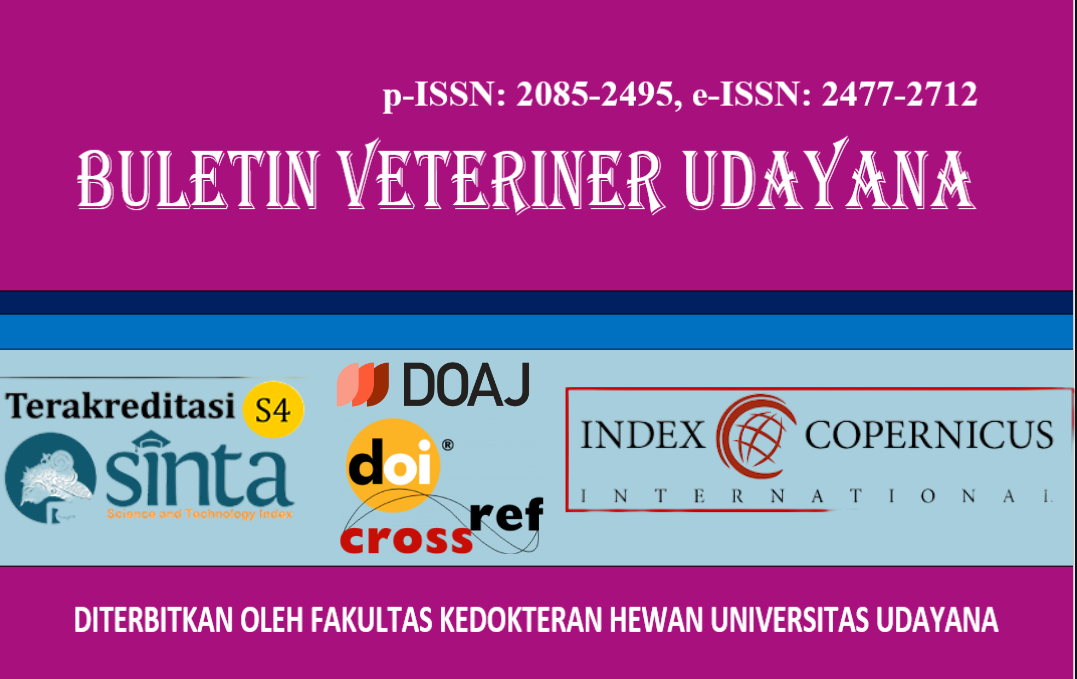REPRODUCTIVE EFFICIENCY OF SIMENTAL-BALI CROSSBRED CATTLE (SIMBAL) AND BALI CATTLE REARED IN CATTLE GROUPS IN PRINGGARATA SUBDISTRICT, CENTRAL LOMBOK
DOI:
https://doi.org/10.24843/bulvet.2024.v16.i05.p06Keywords:
Reproductive efficiency, bali cattle, simbalAbstract
Reproductive efficiency is a measure of a cattle's ability to produce offspring. The objective of this study was to identify and compare the reproductive efficiency of Bali cattle and Simbal cattle raised in livestock groups in the Pringgarata Subdistrict. The sample size consisted of 198 cattle. Data were collected through interviews based on questionnaires. The data were analyzed using One Way ANOVA in SPSS version 22. The results of the study showed that the age at puberty for Bali cattle was 20,7±0,8 months and for Simbal cattle was 20,5±1,0 months. The average age at first mating for Bali cattle was 20,7±0,8 months, while for Simbal cattle it was 20.5±1.0 months. Estrous cycle for Bali cattle was 21,5±1,0 months, while for Simbal cattle it was 22,1±0,8 months. Service per conception was 2,0±0,9 for Bali cattle and 1,8±0,8 for Simbal cattle. The average age at first calving for Bali cattle was 29,7±1,4 months, and for Simbal cattle it was 29,6±1,4 months. The average postpartum estrus period for Bali cattle was 2,9±0,8 months, while for Simbal cattle it was 2,5±0,5 months. The calving interval for Bali cattle was 13,7±,0 months and 13,3±0,8 months for Simbal cattle. Based on these results, it can be concluded that the reproductive efficiency of Bali cattle and Simbal cattle in Pringgarata district shows no significant difference in age at puberty, age at first mating, and age at first calving. However, there were significant differences in the estrous cycle, service per conception, postpartum estrus, and calving interval, although the overall reproductive efficiency was still considered good.




